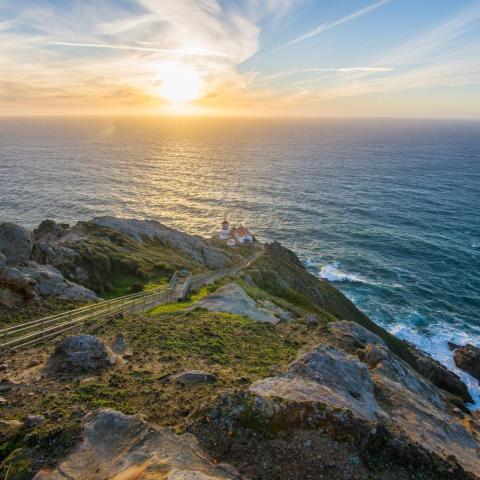
A small fire that blew out of control Tuesday covered about 250 acres by Wednesday at Channel Islands National Park/NPS
What started out as a small prescribed burn on The Nature Conservancy ranch at Channel Islands National Park ballooned to roughly 250 acres on Santa Cruz Island, prompting the summoning of firefighters from national forests in California to help fight the flames.
The fire erupted Tuesday. By Wednesday it covered 250 acres, but fire bosses thought its spread had been contained with the help of air tanker water drops.
Santa Barbara County and Los Padres National Forest sent out two crews of firefighters to Santa Cruz Island on Wednesday. Additional crews from Sequoia and Sierra national forests were expected Thursday.
There were no reported structures at risk at this time and no injuries. Fire weather conditions have improved, with lighter winds expected to extend through Saturday.
“Fire is not new to Santa Cruz Island,” said The Nature Conservancy’s California Islands Program Director Eamon O’Byrne. “We have learned over time that the island ecosystem is resilient and we are so appreciative of the hard work of the fire crews in protecting it.”
A closure to public access is in place for the entire isthmus area of Santa Cruz Island, the Park Service said. This western edge of the closure extends from the landing pier at Prisoners Harbor 220 degrees in a southwest direction to Willows Anchorage on the south side of the island. The eastern boundary is the Montañon Ridge.
For safety reasons, day visitor access to East Santa Cruz Island was closed Thursday. There were 69 campers on the island who were restricted to travel in Scorpion Valley, Cavern Point, and Potato Harbor trails. Trail closures were in place at the road to Smuggler’s Cove, Oil Well, and Upper Scorpion Canyon.
Santa Cruz Island, at 96 square miles, is the largest in the chain of eight California Channel Islands. The Nature Conservancy owns 76 percent of Santa Cruz Island and the National Park Service owns 24 percent. Together, they cooperatively manage this island as one ecological unit.




 Support Essential Coverage of Essential Places
Support Essential Coverage of Essential Places







Comments
NPS Red Card fire fighters and burned area resource specialists from nearby California NPS units also were mobilized yesterday and sent out today.
My guess (& hope) is that while the burn jumped the lines and escaped the planned burn area, if it isn't threatening any built places and doesn't get too hot, once they've shrunk the size of the active burning front, they may let it burn as simply a larger area than originally planned, with substantially more personnel to be able to jump on it if needed. The forecast for Santa Barbara doesn't even have 10mph winds until next Monday, and relative humidy stays above 75% until next Thursday when it drops for a day ahead of a front that may bring rain. Whether the pre-Columbian fire recurrence was 30-50 years or 200-250 years. a low to modest intensity burn over perhaps 2 - 5 square miles of the 96 square mile island could be a great boost for the ecosystem. A vegetation ecologist discussed this with me briefly before he deployed. Based on the phenology of similar vegetation on the mainland, the non-native invasive grasses like Bromus should be up but not yet shed seeds, so the burn could really knock them back. Because of the low rainfall earlier this winter, the native perenniel bunch grasses are more likely to be just starting to green up, and thus will be much less affected by moderate intensity fire. I don't think that NPS could make such on the fly decisions it it were on their land, but this is burning on TNC land, and they can be much more nimble and risk-taking.